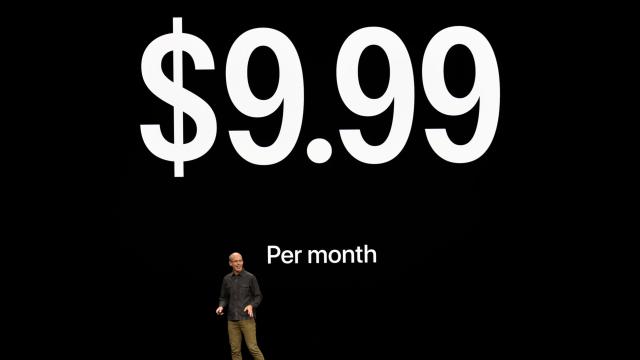Subscriptions aren’t necessarily anything new when it comes to gadgets. If you’ve invested in a smart home, especially one with cameras, you’re probably familiar with the concept. But over the past two years, it’s become even clearer that companies are viewing subscriptions as the de facto future ” and frankly, it sucks.
Sony is the latest consumer electronics company mulling the change. According to a Reuters report, Sony is planning on launching a subscription service for its image sensors. You might think, “What? Why do I care about subscriptions for smart image sensors?”
First, a little background. Last month Sony announced it had created a world-first: two image sensors equipped with artificial intelligence. The benefit of integrating AI on an image sensor, according to Sony at least, is that you get faster, more private, and cheaper AI cameras as it eliminates the need to process data in the cloud. The thing is you still need some system to analyse the data. So Sony’s idea here is that it can sell either a software subscription service or licensing fee, thereby making software data analysis a new revenue stream.
In a nutshell, this matters for one major reason. In an interview with Reuters, Sony executive Hideki Somemiya intimated that a recurring software subscription “would form a market larger than the growth potential of the sensor market itself in terms of value.” Meaning, Sony sees dollars earned via subscriptions as a more stable cash cow than hardware sales, the very thing Sony built up its name on. To be fair, it’ll take a long while before this potential image sensor subscription service directly impacts consumers’ wallets. It’ll more likely hit enterprise first via security cameras and more industrial applications. (One example given is that security camera footage could be processed with software to ensure that workers are wearing proper safety equipment.) But, should it prove successful for Sony, that cost could eventually get baked into smartphones, tablets, or anything with a camera.
This isn’t limited to Sony. It’s a thing we’re starting to see increasingly adopted industry-wide. Last October, Sonos very quietly rolled out its behind a subscription as well.
Bigger companies also aren’t immune. Apple, like Sony, has been associated with hardware for ages, and yet made a whole event last March centering around a series of new subscription-based services. Microsoft has its All Access subscription bundles for Xbox consoles and Surface products. Google’s been churning out subscription services for a while now, with Stadia Pro, YouTube Music, and Google Play Pass to name a few. Heck, even Walmart is preparing to launch a subscription service competitor to Amazon Prime.
These announcements come in drips and drabs, so it can be surprising just how saturated subscriptions are until the random day you look at your credit card bill and scream. But it’s clear that the subscription model is only growing stronger. And there’s a legitimate reason behind it: One-time hardware purchases ” even the really pricey ones ” aren’t enough to keep companies afloat when they also have to invest in ongoing servers and customer support.
At least there’s been a lot of good free or low-cost alternatives ” or barring that, the ability to rely on “dumb” gadgets or paying for products/software upfront with a one-time purchase. But going forward? The concept of ownership and physical products have been dying for a while, and there are some actual benefits to the subscription economy. Namely, convenience and the reduction of physical clutter. But the ability to opt out of subscriptions, or decide which mix of subscriptions you want is increasingly disappearing ” and with it, the freedom to use your purchases however you see fit for however long you see fit.
Soon, you might not own a single thing in your life, be it the clothes you wear, the fridge in your home, the computer on your desk, or the phone in your pocket. You can’t freely mess up the clothes that you rent with impunity. Lending an e-book or a digital copy of a movie or game to a friend is harder than a physical book or disc. With gadgets and services, you’re bound by Terms of Service agreements that can change without your input and be left up shit’s creek with few alternatives if that change isn’t something you agree with. It takes the power out of consumers’ hands and puts it into the hands of companies who may ask for forgiveness first and permission later. And without safeguards in place, that is a shitty future we’re blindly and willingly hurtling into.
